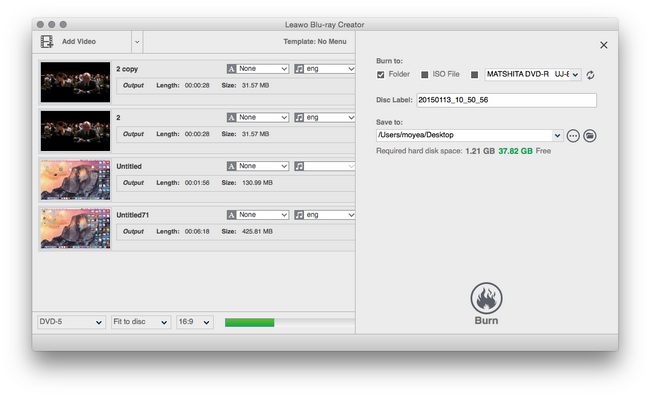
I don’t remember any of the words, which were far more interesting than the hapless simulacra I’ve come up with here.īut I do remember what happened when Dike called to see how things were going. Matt Dike’s mix, drawn on the kind of big flip-chart paper you find at corporate conferences, had only labels in the rectangles: piano riff, drum beat, whatever. You just play with prerecorded sounds until you’re satisfied with what you hear. You don’t have to know a thing about music to do all this. You can move the samples-oops, the loops-anywhere you want in time controls, like the “Vol” sliders at the left, control the volume of each track, or its position left to right in space (along with many other things) you can add all kinds of digital effects.
Apple idvd opening revolutions software#
The sounds I used here, from top to bottom, were: (1) a recording of my father’s voice, speeded up and repeated many times, to become a kind of rhythm track (2) another, simpler rhythm, generated with a software synthesizer (3) the roar of a bear (4) a high D sung by the tenor Juan Diego Florez, ripped from a CD (5) the same high D, but stretched out to last longer, and bouncing up and down in pitch, an effect I easily created by drawing the zigzag line at the lower right.ĪCID, as you can guess, is lots of fun, just as GarageBand must be, since it works the same way. ACID doesn’t label the rectangles, but instead displays waveforms.

Where a rectangle shows up, there’s music. The separate tracks in the mix are vertically stacked, extending horizontally through time. Oops, wait-that’s an ACID project I fooled around with a while ago. A chart showed all the samples that were used on all the tracks, looking more or less like this: Before the evening ended, we had a visit from a woman who, basically, wanted to murder Dike when she left to track him down at home, someone called to warn him he hung up abruptly, when the woman starting throwing something at his house the last words I ever heard from him were, “I’m turning on the electric fence.”īut before all that I got a look at how a master worked with samples. The vocals had already been recorded in the studio, Dike’s team was finishing the backing tracks. The record in the studio I visited was the debut album (on Geffen Records, I think) from someone with the improbable name Apollo Smile. He stayed home, and in fact worked on several records at once, each in a different studio Dike would just phone the studios and tell his people what to do. He stayed home in bed, or that’s what his recording people told me, when I got to a studio where an album he was producing was being made. Dike also worked on the Beastie Boys’ album Paul’s Boutique.Īs it turned out, Dike didn’t really work in a studio. Dike-and wow, does this ever take me back-had a record label called Delicious Vinyl with his partner Mike Ross, and for a while they exploded with pop/hip-hop hits, by people not so much remembered now, like Tone Loc and Young M.C. I was then a rock critic living in Los Angeles, and (for a Spin magazine feature on 24 hours in the life of rock) I went to watch a producer named Matt Dike work in his studio. What people talked about back then was sampling, which of course was in the news because of hip-hop. I had my first introduction to this back in 1989, long before anybody talked about loop-based musicmaking, and of course before anybody made music with personal computers in any useful-let alone user-friendly or commercial-way.

You put prerecorded chunks of music (“loops,” they’re called now) on a grid, and repeat them, layer them, configure them almost any way you like. Well, it’s been done before-check out Sonic Foundry’s ACID (well, now Sony Pictures’ ACID, now that Sony bought the parent company), and in any case the way the software functions has been around for quite a while. All of us-without even a speck of musical training-now can make our own music. If you go to Apple’s site for GarageBand, the company’s new and wildly hyped music software, you’d think you’d encountered a revolution.


 0 kommentar(er)
0 kommentar(er)
